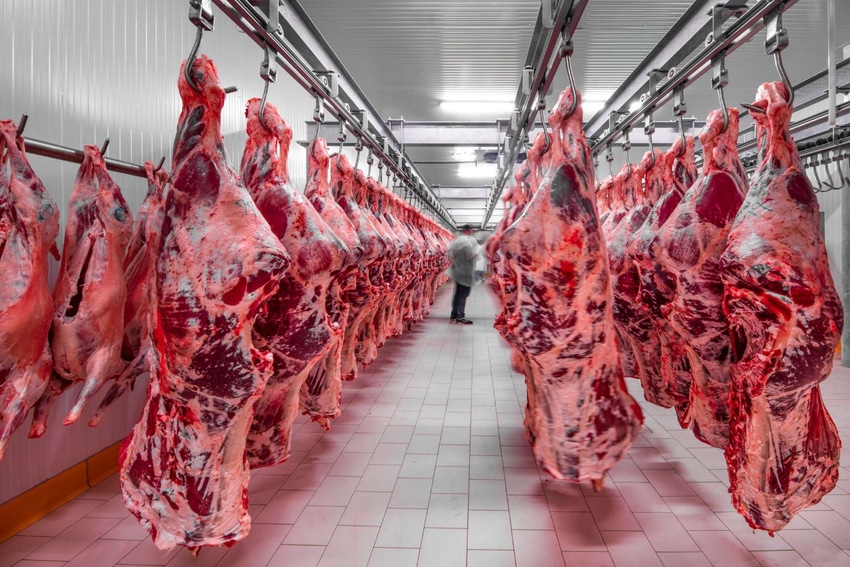COVID-19 threw a mega-sized wrench into the machinations of the cattle market. Here’s how that played out for harvest numbers.
October 15, 2020

Source: Oklahoma State University
It’s become almost a cliché: 2020 is a year like none other in almost every way. For beef producers, that’s played out in every sector and every market. Throw in a drought, hurricanes, wildfires and who knows what’s next and beef producers seem to be challenged in every way imaginable.
One area where 2020 has left its large footprints is in cattle slaughter. According to Derrell Peel, year-to-date cattle slaughter through the week ending Sept. 26, 2020 was down 3.6% year over year. This includes a 4.2% decrease in steer and heifer slaughter; a 1.2% decrease in total cow slaughter; and a 3.7% decrease in bull slaughter so far this year. “Varying slaughter patterns across different cattle classes make it difficult to project where slaughter will end up as the year closes out,” notes Peel, Extension livestock marketing economist at Oklahoma State University.
The biggest component of cattle slaughter is steer slaughter, which is down 4.3% year over year through late September. “Through March, prior to COVID-19 impacts, steer slaughter was up 5.1% year over year. By the end of May, the cumulative steer slaughter for the year to date was down 7.2% before slowly recovering through the summer and early fall,” Peel says.
Steer slaughter in August and September has been up 2.2% year over year. Steer slaughter is projected to increase 3- 3.5% year over year in the fourth quarter leading to an annual total down roughly 2.5% compared to last year, he says.
Heifer harvest followed a similar pattern. “In the first half of the year, cumulative heifer slaughter was down 5.1%. In the third quarter of the year, heifer slaughter was down 1.8% year over year, leading to the current year-to-date decrease of 3.9% year over year. Peel projects heifer slaughter to be down 2.0 – 2.5% year over year in the fourth quarter. “This would result in an annual heifer slaughter total down roughly 3.5% compared to 2019,” he says.
“Beef cow slaughter is up 2.7% for the year to date as of late September. At the end of the first quarter, cumulative beef cow slaughter was nearly 11% higher year over year,” he says. By the end of the second quarter, cumulative beef cow slaughter had decreased to roughly 3.5% higher than the previous year.
The year-over-year increase slowed more in the third quarter with beef cow slaughter in August and September unchanged from last year. Beef cow slaughter is projected to be roughly 2% above year-ago levels in the fourth quarter, leading to an annual total beef cow slaughter roughly 2.5% higher year over year, Peel says.
“Dairy cow slaughter has decreased sharply since June, leading to a year-to-date decrease of 4.9% in late September. The year over year decrease in dairy cow slaughter since late May has been nearly 9%. The rate of decrease is expected to slow in the fourth quarter and may be down roughly 3%. Total annual dairy cow slaughter is expected to be down about 4.5% year over year,” he notes.
“There are many dynamics in cattle slaughter markets in the fourth quarter that will determine total slaughter for the year. Current estimates are for total annual 2020 cattle slaughter to be down roughly 2.5% year over year.”
Further, Peel expects carcass weights for steers and heifers to finish the year at record-large levels, with steer carcasses exceeding 900 pounds for the first time. “Lower cattle slaughter and larger carcass weights are projected to result in total beef production close to unchanged from last year. Total 2020 commercial beef production is projected to be 27.1 – 27.3 billion pounds.”
Source: Oklahoma State University Cow-Calf Corner newsletter, which is solely responsible for the information provided and is wholly owned by the source. Informa Business Media and all its subsidiaries are not responsible for any of the content contained in this information asset.
You May Also Like



